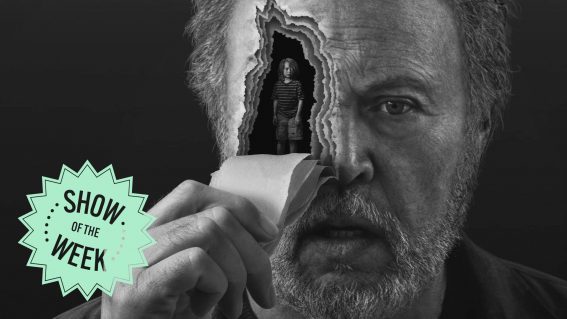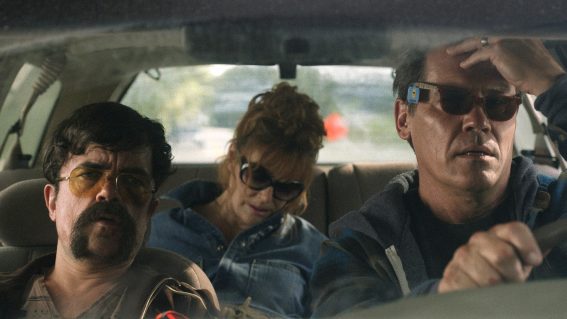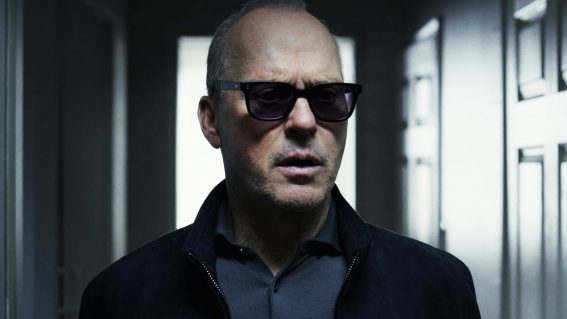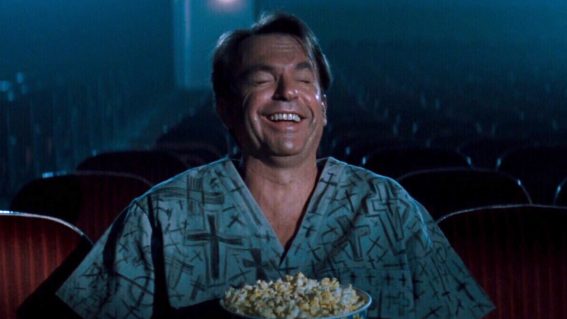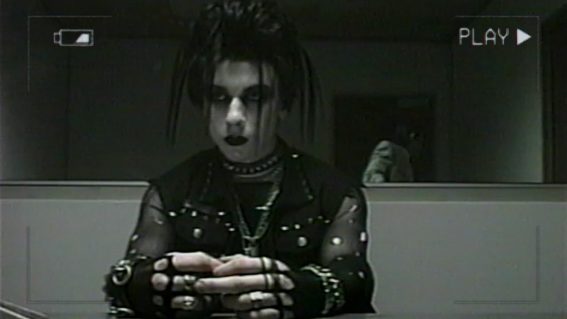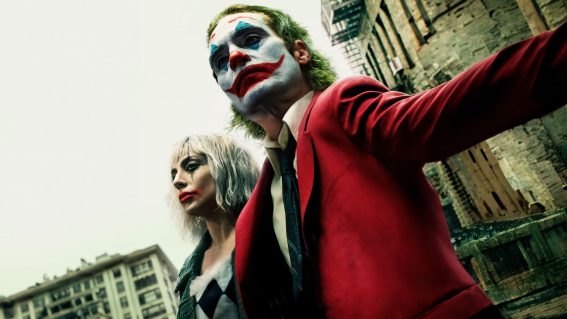Does Tom Cruise represent the last generation of flesh and blood movie stars?

Luke Buckmaster feels the need…the need to reassess Hollywood’s biggest action star. But what is the future of his stardom, and how does it intersect with ABBA, Méliès, and Grand Theft Auto? Read on.
Top Gun: Maverick
In recent years an idea has been gaining traction that Tom Cruise could be “the last movie star.” The spectacular success—and equally spectacular hyperbole—accompanying his new movie, Top Gun: Maverick, has emboldened some outlets to repeat that idea as if it were a fact, adding only slight qualifiers. A headline from the New York Times for instance reads: “Hollywood’s Last Real Movie Star.” CBR chose another caveat: “Hollywood’s Last Great Star.” A piece from Vulture settled on “one of the last movie stars.”
Part of the appeal of Cruise’s protagonist, Captain Pete “Maverick” Mitchell, aligns with the appeal of Cruise himself: that of a titan from another era, still standing in a rapidly evolving world that soon will have no place for him. In one scene from the new movie, a straight-talking buttoned-down admiral (played by Ed Harris, who has perfected the role) tells the hotshot pilot that one day planes will fly themselves and his profession will go the way of the dodo. “The future’s coming,” says the admiral, “and you’re not in it.” Maverick doesn’t argue the point, nor ignore the opportunity for a rejoiner (“maybe so sir, but not today”).
Those proclaiming Cruise as an indomitable force of popular culture, commanding the zeitgeist like Zeus, tend to overlook his box office disappointments (such as Oblivion, American Made and 2017’s The Mummy reboot) and understate the significance of his attachment to well-known brands (Mission: Impossible being the prominent example).
But bestowing upon him a “last” stature is more about a vibe, an aura, mixed with an acknowledgement that things in Hollywood aren’t what they used to be. Titanic franchises such as the Marvel Cinematic Universe have changed the game, accelerating a tendency for massive marketing campaigns based on characters being played (Spider-Man, Doctor Strange etcetera) rather than the actors playing them.
The very concept of human actors is being questioned
The conversation about Cruise potentially being the “last” star has never, as far as I know, acknowledged that it’s not just traditional notions of movie stardom that are currently in a state of flux but the very concept of human actors performing in front of a camera. Digital wizardry can now achieve the previously unthinkable, creating entirely fabricated lifelike videos of famous people or indeed anyone. The deepfake Tiktok channel @deeptomcruise features Cruise singing, speaking in an Australian accent, hanging out outside Harvard university, and playing rock paper scissors on Sunset Boulevard—all entirely faked.
@deeptomcruise Not gonna lie… I love nerds 👨🎓@harvard ♬ origineel geluid – Tom
It’s not perfect, but the technology is rapidly evolving and soon we’ll no longer be able to distinguish the simulation from the genuine article. The dreaded “uncanny valley” will also be a thing of the past, as more and more human characters emerge that are entirely digitally created. These creations will not remain exclusively in the domain of shortform videos; they will become embedded in all kinds of content including longform productions, i.e. movies.
Hollywood has dabbled many times in the space of virtualized actors—resurrecting Carrie Fisher and Paul Walker, for instance, and de-ageing Will Smith and Robert DeNiro—and will soon deliver us a new movie starring James Dean. But the party’s just getting started, even if the writing has been on the wall for some time. In the 1990s, around the time he got 3D computer scans of his face, in the hope that it would be digitally brought back to life in the future, Marlon Brando said: “Actors aren’t going to be real, they’re going to be inside a computer. You watch, it’s going to happen.”

The idea of Tom Cruise being “the last movie star” is perfect not as a statement about current times but what is coming, the actor symbolizing the last generation of mega-famous flesh-and-blood actors before they’re finally and irrevocably fused with virtual agents.
Virtual actors might be a good thing for movies
Despite the inevitable outcry, and pleas to return to the good old days of “real” performers, this may actually be a good thing for movies—reinvigorating the art form and accelerating a trajectory observed by Lev Manovich in his influential book The Language of New Media. Manovich argued that digital artistry changed the essence of the movie medium, which can “no longer be distinguished from animation” and became, in effect, “a sub-genre of painting.”
Want to see a new Top Gun adventure, starring Tom Cruise in his heyday, with Bette Davis playing his love interest and Humphrey Bogart his mentor? The possibilities are endless. Those who balk at the idea of virtual performers ignore that the very essence of motion pictures is illusionary.
Ever since Louis Lumière premiered his film of a train arriving at a station, cinema has been entirely about fooling the senses, from the process of projecting still images in rapid succession (providing the impression of movement) to countless codes and conventions developed to maintain the ruse. The question of emotional truth is always more important than trivial matters about whether what we see in an artistic work was ever actually, physically there.
It’s easier for video game (rather than film) enthusiasts to get their minds around the expressive potential of virtualized performance. During a cutscene in a great game, the player doesn’t think “this is so fake, where are the humans?” They are engrossed by the characters, emotions, story, atmosphere. I recently returned to Grand Theft Auto V (one of my favourite video games) and the virtual performances struck me as a hundred times more resonant, more human, than any performance from an MCU movie.
Marvel’s conga line of flat, uniform characters reduces actual people to algorithmic functions: a reminder that impersonal and even inhumane art is not a matter of form or presentation but the motives of the content creators. The danger of an entertainment industry populated by virtual actors is a pivot away from the idiosyncrasies of human expression towards machine-tooled programming designed to appease and second-guess audiences (though that is much like how Hollywood today works). But it doesn’t have to be like that. Evoking the metaphor of digital wizardry as a form of painting encourages a return to the imaginative potential espoused by early fantasists such as Georges Méliès.
The dawn of a new virtual era
On the subject of metaphors, show business has extracted much mileage over the years from the idea of famous people being “stars”—aspirational beacons of light beaming down on us from above. The act of observing a real star in the sky creates a paradox, ushering the past into the present. Due to the speed of light, and the distance between the viewer and the star, it is seen not as it is but as it once was.
The star is also new to the moment, resplendent and surreal, a beautiful splotch of painting on the canvas of the cosmos. Observing Hollywood’s stars of the future will be a comparable phenomenon: life ushered back into existence, in shimmering vitality, the ghosts of the movies freed from their celluloid coffins to roam again and inspire anew.

The transformation of actors into dazzling virtual beings will occur gradually, though some productions will be determined circuit breakers in hindsight. In the world of music virtualisation, one may be unfolding right now.
You might not have heard that last month ABBA returned to the stage for the first time in decades, kicking off a season of virtual concerts using lifelike digital avatars (or “Abbatars”). It’s a wonder that reviewers managed to operate their keyboards, their jaws so clearly on the floor. Reports that the “real” ABBA attended the premiere got it around the wrong way. The “real” ABBA weren’t the old-timers hobbling to the stage after the performance, but the phantasmagoria that came before: the lights, sounds, spectacle, sheer experience that transported the audience into a magical alternate reality.
The wait is over.
An extended look at #ABBAVoyage – the concert that has to be seen to be believed. pic.twitter.com/M5eVZl5EHM
— ABBA Voyage (@ABBAVoyage) June 2, 2022
Likewise, the “real” Tom Cruise isn’t the man on the red carpet, working the crowd, or the savvy operator meeting with studio executives in Tinsel Town. The “real” Cruise is the god-like entity on screen, with his otherworldly looks and million-watt smile; with his eternal vibe and aura.
If the stars in the sky are visions of the past rendered into the present with stunning freshness and vivacity, changing the contemporary outlook, perhaps we are yet to see a “true” movie star, given every famous actor, preserved in light and shadow, has never transcended the decisions they made as a flesh and blood mortal. There have been digital resurrections here and there, but nobody has truly achieved the paradox of being simultaneously old and new.
Perhaps Tom Cruise could get on the frontfoot and sign a five or 10 picture deal for his celluloid afterlife, helping to inform the narratives that will shape it before time and mortality takes that ability away from him. Production could commence on Top Gun 3 and Mission: Impossible 27 shortly after his death. Then we could call him the last—and the first—movie star.





